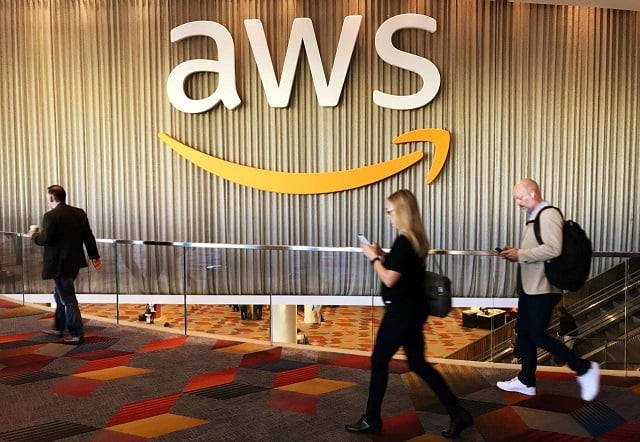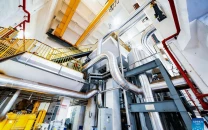Siemens sees scale, data privacy as winners in digital race
The race is still wide open and being first to gather a critical mass of software developers

Attendees at Amazon.com Inc annual cloud computing conference walk past the Amazon Web Services logo in Las Vegas, Nevada, US, November 30, 2017.
PHOTO: REUTERS
The trains-to-turbines group is betting the future of its core industrial automation business on its MindSphere platform, which competes with General Electric’s Predix and a host of others to help customers cut costs and improve productivity.
The race is still wide open, and being first to gather a critical mass of software developers and system integrators is crucial to winning customers, much as Apple’s large developer community made its app store the most attractive.
Amazon steps up pace in artificial intelligence race
“One thing is clear: Size matters,” Jan Mrosik, chief executive of Siemens’ 11.5 billion-euro Digital Factory division, told Reuters in an interview on Friday.
Siemens said it was targeting 1.25 million connected devices and systems by the end of its fiscal year in September, up from 1 million currently, as it expands its offering - previously focused on autos and aerospace - to cover all sectors.
MindSphere gathers data from devices, analyses the information and uses it to help customers design products faster and optimize processes.
To increase its attractiveness to developers, Siemens is partnering with Amazon Web Services (AWS) , the most popular cloud provider, as of next month.
So far, it has partnered with Germany’s SAP - with whom it developed the platform - and from April it will also work with Microsoft’s Azure.
Mrosik said Siemens’ own experience of manufacturing in fields ranging from trains to building technology to energy equipment also gave it a solid basis of customers and expertise.
Simon Jacobson, supply-chain analyst at technology research group Gartner, tended to agree.
“Where Siemens has opportunity is to leverage its domain expertise across a range of sectors,” he said, although he cautioned: “This is a market that’s still rapidly unraveling.”
Mrosik also highlighted Siemens’ policy of keeping customers’ data in silos that are only visible to them as a competitive advantage. “We as Siemens technically can’t look into the data of anyone,” he said.
BREAKEVEN
Digitally enhanced manufacturing is still in its infancy, with companies pursuing different strategies. But competition is already fierce, as evidenced by Emerson Electric’s failed $29 billion bid to buy Rockwell Automation earlier this year.
Siemens is increasing research and development spending to over 5.6 billion euros this fiscal year from 5.2 billion last year, the lion’s share of which will go to Digital Factory. MindSphere has a breakeven target date of 2020.
Amazon steps up pace in artificial intelligence race
Siemens says it made 5.2 billion euros in digital revenues in the year to September. It has 23,000 in-house software developers, rivaling some of the world’s biggest pure-play software companies.
“Digitalization is starting to come together for Siemens,” said Jefferies capital goods analyst Peter Reilly.
General Electric is reducing investment in its Predix industrial software platform by about $400 million this coming year to $1.2 billion, and focusing solely on its own installed base of customers for the rollout.
Under new Chief Executive John Flannery, GE as a whole is narrowing its focus and shedding businesses with around $20 billion in revenue.
GE aims to double Predix revenues to $1 billion in 2018.



















COMMENTS
Comments are moderated and generally will be posted if they are on-topic and not abusive.
For more information, please see our Comments FAQ